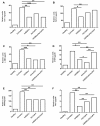Simultaneous Administration of ADSCs-Based Therapy and Gene Therapy Using Ad-huPA Reduces Experimental Liver Fibrosis
- PMID: 27992438
- PMCID: PMC5161330
- DOI: 10.1371/journal.pone.0166849
Simultaneous Administration of ADSCs-Based Therapy and Gene Therapy Using Ad-huPA Reduces Experimental Liver Fibrosis
Abstract
Background and aims: hADSCs transplantation in cirrhosis models improves liver function and reduces fibrosis. In addition, Ad-huPA gene therapy diminished fibrosis and increased hepatocyte regeneration. In this study, we evaluate the combination of these therapies in an advanced liver fibrosis experimental model.
Methods: hADSCs were expanded and characterized before transplantation. Ad-huPA was simultaneously administrated via the ileac vein. Animals were immunosuppressed by CsA 24 h before treatment and until sacrifice at 10 days post-treatment. huPA liver expression and hADSCs biodistribution were evaluated, as well as the percentage of fibrotic tissue, hepatic mRNA levels of Col-αI, TGF-β1, CTGF, α-SMA, PAI-I, MMP2 and serum levels of ALT, AST and albumin.
Results: hADSCs homed mainly in liver, whereas huPA expression was similar in Ad-huPA and hADSCs/Ad-huPA groups. hADSCs, Ad-huPA and hADSCs/Ad-huPA treatment improves albumin levels, reduces liver fibrosis and diminishes Collagen α1, CTGF and α-SMA mRNA liver levels. ALT and AST serum levels showed a significant decrease exclusively in the hADSCs group.
Conclusions: These results showed that combinatorial effect of cell and gene-therapy does not improve the antifibrogenic effects of individual treatments, whereas hADSCs transplantation seems to reduce liver fibrosis in a greater proportion.
Conflict of interest statement
The authors declare that the funder Innovare provided support in the form of salaries for author JAB, but did not have any additional role in the study design, data collection and analysis, decision to publish, or preparation of the manuscript. Besides, author JAB has the USA patent applications numbers 7807457, 7858368 and 8043955 related to application of human uPA wild type/or its truncated version.
Figures





References
-
- Kamada Y, Yoshida Y, Saji Y, Fukushima J, Tamura S, Kiso S, et al. Transplantation of basic fibroblast growth factor-pretreated adipose tissue-derived stromal cells enhances regression of liver fibrosis in mice. Am J Physiol Gastrointest Liver Physiol. 2009; 296(2): G157–67 10.1152/ajpgi.90463.2008 - DOI - PubMed
-
- Lee YG, Hwang JW, Park SB, Shin IS, Kang SK, Seo KW et al. Reduction of liver fibrosis by xenogeneic human umbilical cord blood and adipose tissue-derived multipotent stem cells without treatment of an immunosuppressant. J Tissue Eng Regen Med. 2008; 5: 613–21
MeSH terms
Substances
LinkOut - more resources
Full Text Sources
Other Literature Sources
Medical
Miscellaneous

